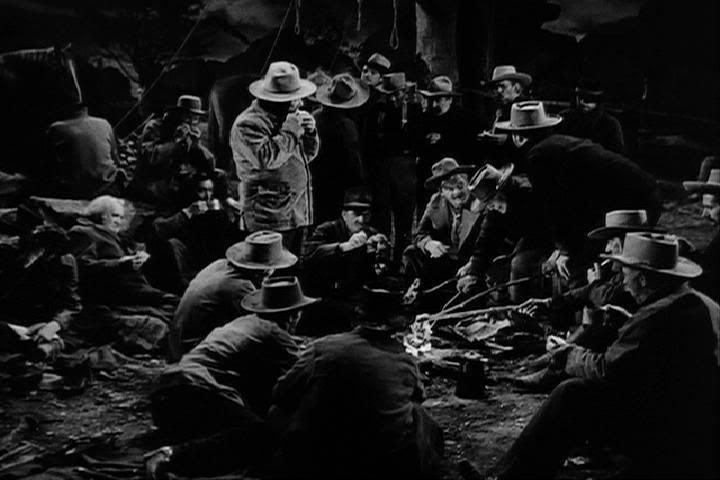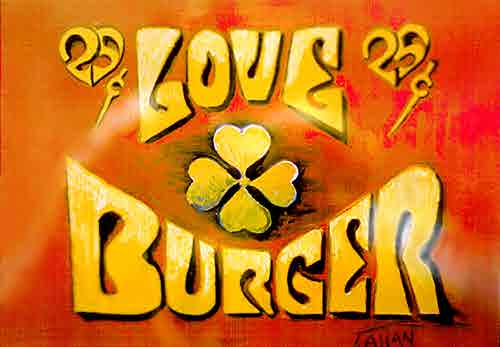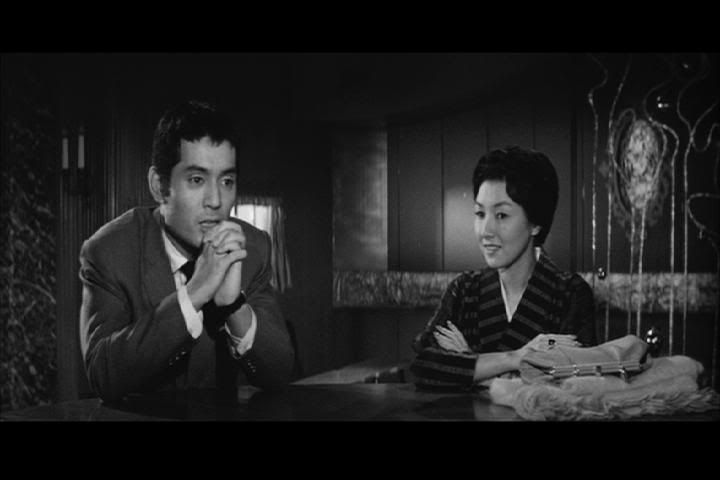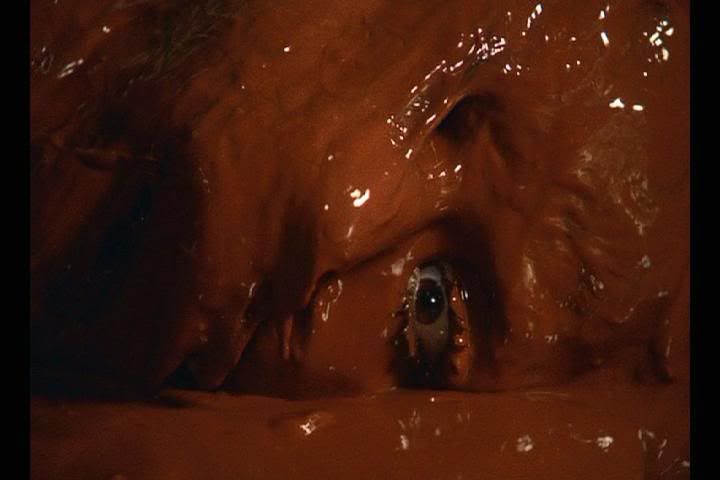
The eponymous subject of Shirley Clarke's fascinating documentary
Portrait of Jason is Jason Holliday, a gay black man, originally from the deep South, who led a rough and varied life. Clarke simply puts Jason in front of the camera and lets him speak, and this proves more than enough to make this portrait engaging, funny, and genuinely moving in a surprising way. Jason seems to be a born entertainer, and the camera hardly phases him in the least. He immediately launches into a stream of hilarious anecdotes, acts out scenes from famous Hollywood movies, and generally riffs on himself and his life. He'd been a male hustler, a houseboy, a kind of amateur con man, and done all sorts of odd jobs — everything, that is, but hold down a steady 9-to-5, which he says early on is not for him. Jason's bitchy, extravagant persona is a perfect focus for a documentary of this kind, where he's the only thing on screen throughout the film. Clarke occasionally lets the camera lose focus, reducing the image to a blur, which allows her cameraman to imperceptibly switch reels while Jason's voice continues on the soundtrack. But other than these moments of visual abstraction, the whole film takes place in a single room, with the camera aimed squarely at Jason, sometimes showing him lounging in full body, sometimes focusing in for a tightly framed close-up on his expressive face. In the memorable image I've captured above, Clarke allows a skull in the background to provide a mirror image to Jason's strained grin.
Jason is always grinning here, and laughing too. He's one of those people who will laugh longer and harder at his own jokes and stories than anyone else around him, and his wild laughter is contagious. After many of his stories, he simply throws his head back and howls, collapsing backwards in gales of laughter. Even so, one senses almost immediately that there's something behind this merriment. In unguarded moments, when there's a lull in the unceasing monologue, Jason seems a bit drained and empty, uncertain even, as though only the constant flow of words and fun can keep him from fading away. In one striking scene early on, Clarke films a break in the streams of words, with Jason quietly smoking a cigarette; she shows him in a head-on tight close-up, and his unfocused eyes and blank slate of a face are a stark contrast to the vibrant, dynamic figure we'd seen before then.
Indeed, as the film goes on, the portrait being created here becomes darker and darker, with more subtle hints of what's to come. Jason's drinking, pronounced throughout the film, becomes increasingly reckless towards the end, and by the final twenty minutes he's visibly stumbling and slurring his words, clutching a bottle as his monologue takes an introspective turn. What emerges is a sense of a man who has created his entertainer persona as a shield against a pretty ugly life — an abusive father who beat him daily, racism encountered everywhere, lots of empty sex and a lack of real love. Clarke simply allows him to keep talking long enough so that the created persona falls away and the man begins to show. She's clearly heard most of his anecdotes before, and when he seems uncertain of where to go next, she's heard off-camera coaching him, "Tell the one about..." So one definitely gets the sense that she's playing a kind of waiting game here, letting Jason get through all his usual stories and acts until he runs out of the everyday stuff and has to dig deeper. He winds up digging into his childhood and his darker experiences of racism and homophobia, telling them increasingly without the nervous laugh that often accompanied his earlier, more humorously presented tales.
Clarke's film is endlessly fascinating and entertaining, largely because Jason is so fabulously interesting. The hallmark of a great documentary is to treat the subject with an aesthetic that brings out its essence, and Clarke is certainly able to do this with Jason. This sustained focus on his words and his life provides an intimate glimpse into the man, in the process casting a harsh glow on the social prejudices that guided him into the life he wound up leading. This is a stark, uncompromising portrait, both wildly entertaining and ultimately harrowing as well.
Stan Brakhage is an avant-garde filmmaker whose films continuously amaze and delight me, but writing about his work, finding a way into it that makes sense of the experience, is incredibly difficult. I hope to be writing a lot about his films here, and maybe by a process of continuously thinking about his work in words I'll be able to get closer to understanding it. In any case, tonight I revisited three of my favorites from him. Brakhage's abstract films, especially his purely painted one, provide so little ground for thematic interpretation that it's often very tempting to rest a reading on the film's title, and to view the film's abstract imagery through the lens of that title's contextualization. In the case of
Love Song, one of Brakhage's late painted works, it's very difficult not to think of the film in terms of erotic imagery.
The film starts with thick, tactile clumps of paint, some of the most pronounced textural effects I've seen in my admittedly limited exposure to Brakhage's painting. The paint seems to be elevated off the film cells, deeply layered and creating a shaky, start/stop frame-by-frame flow. As the film's ten minutes go by, the painting gradually becomes more fluid, less raised, and the flow becomes smoother. The effect is undeniably sensual, as the jerky, frantic motion calms down into a more relaxed but equally passionate flow. It's also hard to deny the temptation to inscribe forms upon the black masses that flow across the frame over the course of the film's second half. Constantly shifting shape and pouring into each other, being absorbed by other black shapes, these forms nevertheless suggest human figures, limbs flailing, in a flood of bodies set off against the pale, watery washes of color that form the frame's backgrounds. More importantly than such semi-figurative hints is the way in which the sense of movement in the film suggests its connection with eroticism and sexuality. The black threads streaming through the frame are continually coupling and separating, creating a sensation of stickiness and wetness, like strands of seminal fluid intertwining and coming apart. The overall effect is like watching a series of primal embraces taking place between opposing areas of color.
It's difficult to overemphasize the extent to which a film like this is first and foremost a visceral, sensory experience, and only secondarily an intellectual one. In Brakhage's mature style (or styles, since he never stopped developing and changing), images rarely stay on the screen for more than a fraction of a second, and the overall pace is so rapid that it lends itself primarily to in-the-moment experience. This is not to say that the mind isn't working during a Brakhage film. Quite to the contrary, his abstract but suggestive images inevitably trigger waves of mental associations and fleeting connections. But it's only afterwards that my brain can catch up to the images, to process them and form overall impressions outside of the momentary visceral flood. This remains possibly my favorite Brakhage of the handful I've seen, because not only is its visceral effect incredibly powerful — this is very common in Brakhage's films — but because of the specificity of this effect, its erotic charge and sense of bodies in motion.
Mothlight is a much earlier Brakhage film, and is probably the film most synonymous with his name for those only vaguely aware of him. This is probably because, even more so than with
Love Song,
Mothlight lends itself especially well to the formation of a narrative or thematic core. The film was made by collaging together natural objects — blades of grass, moth wings, dead insects, bits of bark and leaves — onto a continuous strip which was then divided into individual film frames for projection. The effect is incredibly striking, pointing the way towards the rapid pace of Brakhage's painted films, with objects existing across multiple frames in ways that are simply impossible with traditional photography. In conventional film, an object exists from frame to frame because the camera is taking subsequent still images of it as it moves over time. In
Mothlight, objects like blades of grass exist from frame to frame because they are literally stretched across the filmstrip, so that each subsequent frame shows an additional section of the object. In other words, if traditional film moves in time, Brakhage's work here is much more concerned with space.
What
Mothlight achieves in this regard is to make the viewer aware of the illusion of cinematic time, to draw attention to the filmstrip as a tangible object in its own right. Because objects in this film persist across frames, the illusion that one frame is happening before or after another is shattered; what is highlighted, instead, is that one frame is
next to another on the physical space of the filmstrip, and that objects are laid out across this space. The effect is something like looking at a slide through a microscope, sliding it back and forth to observe different aspects of the object on display. Brakhage's interest in his natural samples isn't scientific, though, but poetic. He's arranged the detritus and discarded bits and pieces of nature into an impressionistic rumination on mortality and decay.
Finally, I watched Brakhage's interpretation of Dante's
Divine Comedy, a series of four short segments collectively entitled
The Dante Quartet. Each of the sections corresponds to one of Dante's three levels of being, with Brakhage dedicating two to Hell, and one each to Purgatory and Heaven. The film opens with "Hell Itself," which provides a typically intense montage of painted cells, fierce collisions of color and only the barest hint of some urban footage which Brakhage was apparently painting over. The second section, "Hell Spit Flexion," provides a second vision of Hell, and a much more terrifying one. It consists entirely of fragmentary, sparse images flashed on screen, and contained within a much smaller frame within the frame, so that the bulk of the space on screen is black. This is Hell as a disconnection from sensory experience, a distancing from light and color and immersion in black. Hell as blindness, perhaps, or near-sightedness. Hell as a lack of sensation, or sensation felt without the visceral impact and energy that Brakhage strove for in his work. The third segment, "Purgation," maintains some of the feel of the second, with its jittery rhythms and occasional freeze-frame moments. But the inner frame expands to a larger size, creating a kind of widescreen effect within the frame; this is because here Brakhage is painting over old 35mm prints, and the movie imagery is occasionally visible through gaps left in the paint. It's as though Purgatory for Brakhage is Hollywood cinema, with its traditional narratives and representational imagery, and as much as he tries to blot it out with his own images, it still shows through.
What shows through in the final segment, though, is simply Brakhage's ecstatic celebration of life and the world. If the previous sections of the film represented Brakhage's struggles with expressing himself through abstraction, this final piece finds him at the absolute peak of his expressive powers. "Existence Is Song" is his interpretation of Dante's Paradise, a burst of passion and energy virtually unmatched anywhere. Brakhage's wild painting is at its peak, with colors dancing across the frame and circling around each other in sheer delight. He blends his paintings here with shots of the moon, and the earth as seen from space, and volcanic eruptions. In the course of the film, as the sections move steadily closer to Paradise, the background imagery that Brakhage blends with his paints followed suit, becoming both grander and more intimately integrated into the film. This secondary imagery develops from the drab cityscapes dimly visible behind the first section, to the Hollywood fantasies which provide a counterpoint in the third section, to the metaphysical images that play such an integral role in the final movement.
There's something about Dante that seems to draw avant-garde artists to revisit his work, as the multi-talented painter and designer
Tom Phillips did with his illustrated translation edition and video project also based on the
Divine Comedy. Brakhage's version is a powerful vision of the stages of the afterlife as a parallel for his own artistic creativity. And this creativity finds its ultimate outlet in the virtuoso display that ends "Existence Is Song," culminating the film's ascent to Paradise with an explosive celebration, not of God, but of man's sensory capabilities.








































